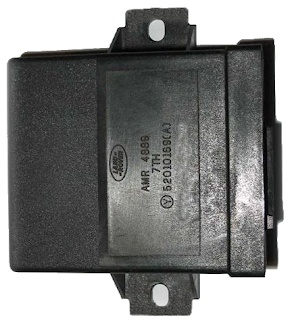 |
| LG 42LH3000 Television |
It was worse when the TV was first switched on but got better as it warmed up. Over time it gradually got worse until no picture was shown on the left side at all. From an Internet search it seems that it is a common problem where the LCD driver transistor array die bonded to the flexi-circuit along the top of the LCD loses connection. These devices are driven by the Tcon board at the top middle of the TV via two flex-circuits, these connectors were checked for bad connection but were fine. It was later found that the flex-circuit transistor array on the far left of the LCD when pressed gently would fix the screen problem. A couple of thin cardboard spacers were cut and placed under the flexi-circuit transistor array ( I did this for all the arrays just in case the problem occurred on the remaining arrays ) to make it press more firmly against the silicon rubber pad on the removable front pressed steel bezel of the LCD. This helped ensure that the array would be pressed firmly by the silicon rubber pad when the front frame was replaced and the screws firmly tightened. I hope this helps someone with similar problems and thanks for reading.
Update: After a day the screen had the same problem. Over the course of about a month I disassembled the TV three times trying a number of rubber gasket materials including sticky draught excluder , these worked for a while each time then the screen developed the fault again. On the fourth disassembly I removed the factory fitted flexible rubber pad pushing down on the leftmost flexi-circuit at the top of the screen. I did notice that the bonded transistor array on the flexi-circuit assembly was warm to the touch when the TV was running out of its case.
 |
| Positions of Silicone Strips |
So I ordered a sheet of thermally conductive silicone rubber 1.6mm thick , I cut three strips strips of this 10mm x 35mm and sandwiched two of them together. The other strip was placed carefully under the flexi-circuit transistor array die while the other two were placed on the top of the flexi-circuit transistor array die (see image above for rough positions or the rubber strips). This assembly would then be clamped once the front pressed steel frame bezel was screwed to the front LCD panel surround. After this was done the TV has worked since so I think the problem may also be related to the transistor array overheating and the thermally conductive silicone rubber is now removing the associated heat from the transistor array to the front metal bezel of the LCD panel. See the diagram for the the way the strips were positioned.
 |
| Flexi-circuit Sandwich , Looking Down from Top Edge of Screen |
Remember that TV's have mains voltage and also higher voltages for the cold cathode strip lamps exposed when the rear cover of the TV is removed so be careful. You may by fiddling with these transistor arrays make the connection problem worse, but if the TV is already toast what have you got to lose.



